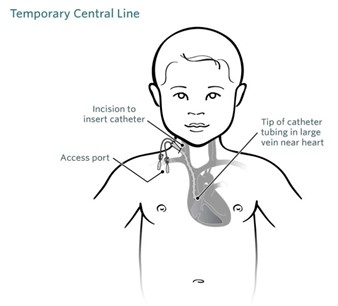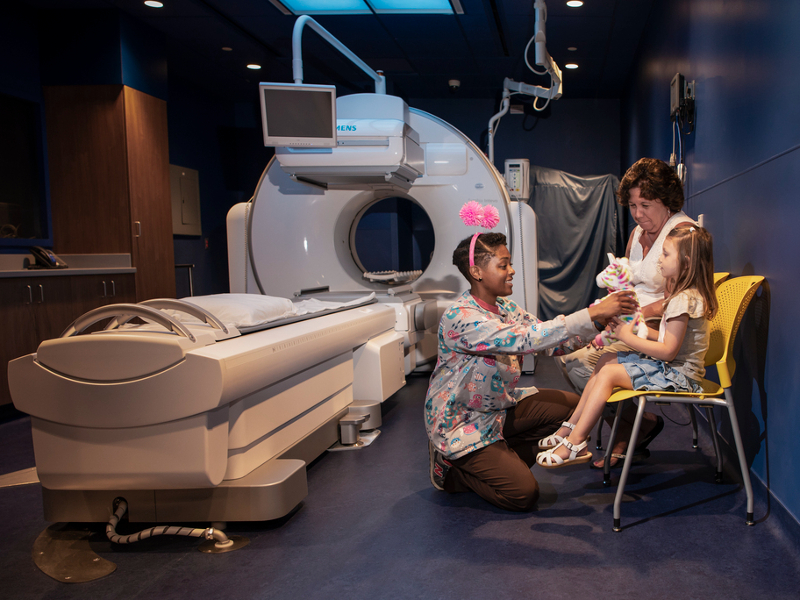Treatment
Pediatric Temporary Central Venous Catheters

What You Need to Know
A temporary central line is a short-term catheter placed in a vein, either in the neck (the internal jugular vein) or the groin (the femoral vein). Generally, a temporary central line is in place for less than two weeks.
A temporary central line is placed for dialysis (blood filtration to remove chemicals and waste) or apheresis (separation of blood components, usually to obtain stem cells). These therapies require a special catheter to process the blood efficiently. The end of the catheter (called the hub or clave) is outside the skin and the nurse will use that to access the vein, rather than having to place an IV each time.
Schedule an Appointment
Our pediatric specialists provide personalized care for your child’s physical, mental and emotional health needs. Meet our providers and schedule an appointment today.
Frequently Asked Questions
Insertion
How is a temporary central venous line inserted for children?
Will my child be awake during the temporary central venous line procedure?
How long does the temporary central venous line procedure take?
What risks are associated with this temporary central venous line procedure?
Will my child be in any pain after the temporary central venous line procedure?
May I remove the bandage over the catheter after my child's temporary central venous line procedure?
Are there any activity restrictions after a temporary central venous line procedure in a child?
When can my child bathe after the temporary central venous line catheter is placed?
Removal
How is a temporary central venous line removed in children?
When can I take off the bandage from the temporary central venous line catheter removal?
When can my child bathe after the temporary central venous line catheter is removal?
Meet the Providers Who Offer Central Venous Catheters
Departments that Offer Temporary Central Venous Catheters

Interventional Radiology
Children's National interventional radiologists perform a full range of minimally invasive, image-guided procedures to both diagnose and treat disease in infants, children and adolescents. Learn more about how we help children in our care.

Help Kids and Make a Difference
Invest in future cures for some of life's most devastating diseases. Give today to help more children grow up stronger.







